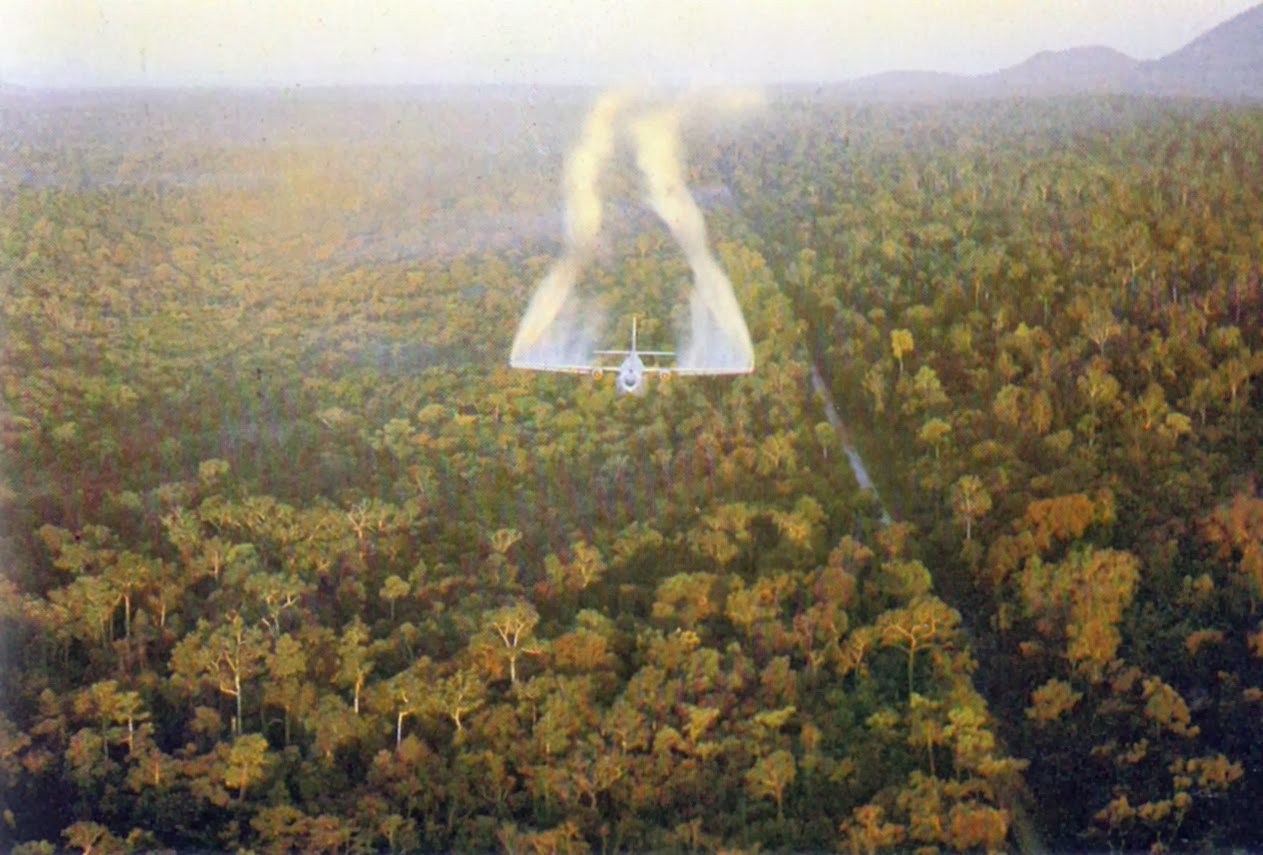| Online: | |
| Visits: | |
| Stories: |

| Story Views | |
| Now: | |
| Last Hour: | |
| Last 24 Hours: | |
| Total: | |
Air Force Reservists Exposed to Agent Orange in Post-Vietnam Planes: Study
A new study shows higher exposure than previously acknowledged. The Air Force and Department of Veterans Affairs have previously denied benefits to these crew members.
 |
| “Ranch Hand” UC-123B, 1962 |
From 1971-1982, Air Force reservists, who flew in 34 dioxin-contaminated aircraft used to spray Agent Orange and returned to the U.S. following discontinuation of the herbicide spraying operations in the Vietnam War, were exposed to greater levels of dioxin than previously acknowledged, according to a study published today in Environmental Research by senior author Jeanne Mager Stellman, PhD, professor emerita at the Mailman School of Public Health’s Department of Health Policy and Management.
“These findings are important because they describe a previously unrecognized source of exposure to dioxin that has health significance to those who engaged in the transport work using these aircraft,” according to Dr. Stellman and Peter A. Lurker, PhD, PE, CIH, an environmental engineer with many years of experience evaluating environmental exposures in the Air Force.
During the Vietnam War, in an operation known as “Operation Ranch Hand,” approximately 20 million gallons of herbicides, including around 10.5 million gallons of dioxin-contaminated Agent Orange, were sprayed by 34 C-123 aircraft. These aircraft were subsequently returned to the U.S. and were used by Air Force reserve units between 1971 and 1982 for transport operations. After many years without monitoring, tests revealed the presence of dioxin (also known as TCDD). All but three of the aircraft were smelted down in 2009.
The Air Force and Department of Veterans Affairs have previously denied benefits to these crew members. Current policies stipulate that “non-biologically available dried residues” of chemical herbicides and dioxin would not have led to meaningful exposures to flight crew and maintenance personnel, who are therefore ineligible for Agent Orange-related benefits or medical examinations and treatment.
Researchers estimated dioxin body burden using modeling algorithms developed by the US Army and data derived from surface wipe samples collected from aircraft used in Operation Ranch Hand. They compared estimates with available guidelines and standards and discuss the implications with respect to current Air Force and VA policies.
These models suggest that the potential for dioxin exposure to personnel working in the aircraft post-Vietnam is greater than previously believed and that inhalation, ingestion, and skin absorption were likely to have occurred during post-Vietnam use of the aircraft by aircrew and maintenance staff. The estimated dermal and oral exposure exceeded US standards. The estimated airborne contamination exceeded the only available (German) standard.
Dr. Stellman and her co-authors Drs. Fred Berman, DVM, PhD, director of Toxicology at Oregon Health Sciences University and Richard Clapp, professor emeritus, Boston University School of Public Health had previously consulted with the Senate Veterans Affairs Committee on the unresolved issues of Agent Orange exposures in the aircrew. They teamed up with Dr. Lurker to develop the models to clarify the issue.
“Our findings, the results of three different modeling approaches, contrast with Air Force and VA conclusions and policies,” concludes Dr. Stellman. “The VA concept of a “dried residue” that is biologically unavailable is not consistent with widely accepted theories of the behavior of surface residues. Aircraft occupants would have been exposed to airborne dioxin-contaminated dust as well as come into direct skin contact, and our models show that the level of exposure is likely to have exceeded several available exposure guidelines.”
For more information, please visit: http://www.mailman.columbia.edu
Source:
http://www.eurekalert.org/pub_releases/2014-02/cums-afa022514.php
Source: http://www.activistpost.com/2014/02/air-force-reservists-exposed-to-agent.html




